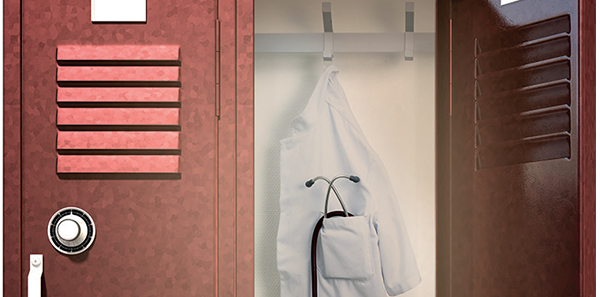
Re: “There Are Only Four Effective Interventions in Emergency Medicine”
In 1980, a wise, old teacher noted that, “The only use of a Swann Ganz catheter in a patient with heart failure is as a tourniquet.” Please add “Pain is the fifth vital sign” to the Joint Commission indictment. Not only was there no support for it, but it proved lethal to so many.
Explore This Issue
ACEP Now: Vol 42 – No 02 – February 2023—Stephen Bohan, MD, MS, FACP, FACEP
Re: “A Novel Technique to Treat a Dental Avulsion”
Any non-dentist attempting to replace avulsed teeth will be justifiably nervous. Even in a well-equipped emergency department (ED), working in a small space and doing a novel procedure can be challenging; a remote setting is even more problematic. It behooves the clinician to use the simplest possible methods. While Dr. Dark and colleagues describe one method on interdental stabilization using sutures (previously described), it is, as they note, not the easiest and probably not the most successful technique. Using cyanoacrylate (Superglue or the equivalent) may be the easiest and best makeshift method. After drying the affected tooth and the adjacent teeth and gums, apply the adhesive to the teeth and to the gingiva below them. Apply the adhesive to both the mesial (closest to mid-line) and distal (away from midline) sides of the tooth so that it bonds to the adjacent teeth. Even better is to combine adhesive and a wire that can be the metal bridge from a surgical mask, a thin orthopedic wire, a small-gauge spinal needle with the ends clipped, a thin paperclip, or similar thin-gauge, malleable, but relatively rigid wire. Bend the wire so it conforms to the convexity of the normal tooth configuration and covers four or five teeth (more if the technique is used to stabilize a mandibular or maxillary fracture).1 The patient should be placed on a liquid or soft diet and be seen by a dental professional as soon as possible.
—Kenneth V. Iserson, MD
Reference
- Dental: fillings, extractions, and trauma. In: Iserson K.V. Ed. Improvised Medicine: Providing Care in Extreme Environments, 2e. McGraw Hill; 2016. Available at: https://accessmedicine. mhmedical.com/content.aspx?bookid=1728§ionid=115697338. Accessed January 29, 2023.
Re: “The Reperfusion Guidelines Finally Catch Up”
I wanted to thank you for publishing Dr. Westafer’s article on new STEMI activation criteria. About 15 months ago, I had an acute posterior myocardial infraction (MI). My EKG changes were classic, but missed by the emergency department (ED) and emergency physician reading my EKG. My troponin was elevated and due to this a cardiologist was called on a consultative basis. The cardiologist arrived 2.5 hours after I entered the ED. The cardiologist immediately recognized the acute posterior MI. I was brought to the cath lab an hour later and had a stent placed. Three and a half hours had elapsed.
I hope this article improves the recognition of posterior MIs along with the other EKG patterns noted.
—Patricia Jo Schiff, MD, MMSc, FACEP
Re: “The Reperfusion Guidelines Finally Catch Up”
I read with interest the nice article by Dr. Westafer: “The Guidelines Finally Catch Up. New STEMI activation criteria.” As one of the founders of the new occlusion myocardial infarction (MI)—Non-Occlusion MI (OMI/NOMI) paradigm to replace the STEMI—non-ST elevation myocardial infarction (STEMI) paradigm, I am delighted that the American College of Cardiology/American Heart Association is de-emphasizing ST elevation in the diagnosis of occlusion. There are so many features of the ECG that are important. Among them, Dr. Westafer discusses posterior OMI; however, she propagates old dogma: that posterior OMI has a horizontal ST segment, a large R-wave, and an upright T-wave. We have proven all of this false in this paper: https://www.ahajournals.org/doi/pdf/10.1161/JAHA.121.022866.
We showed that acute posterior OMI may have a flat, upsloping, or downsloping ST segment, may have a small or large R-wave, may have inverted, biphasic, or upright T-waves. What matters is whether the ST depression is maximal in V1-V4 versus V5-6. The R-wave only enlarges after there is myocardial damage. The T-wave is more likely to be upright if there is prolonged infarction or reperfusion. The ST segment is downsloping in cases with a negative or biphasic T-wave.
—Stephen W. Smith, MD
Pages: 1 2 | Multi-Page





No Responses to “Readers Respond: Dental Avulsions, Reperfusion Guidelines, and More”